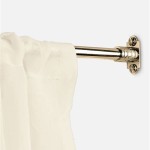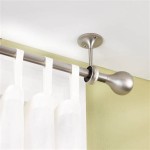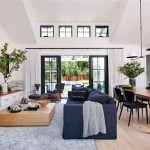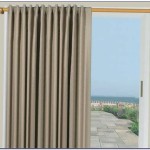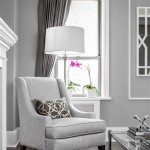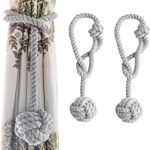Blackout Window Curtains For Living Room: Enhancing Comfort and Style
Blackout window curtains have transitioned from a niche product to a mainstream choice for homeowners seeking to optimize the functionality and aesthetic appeal of their living rooms. These curtains offer a range of benefits extending beyond mere light blocking, contributing to improved sleep quality, energy efficiency, noise reduction, and enhanced privacy. The selection of appropriate blackout curtains requires careful consideration of the material, color, style, and installation method to ensure optimal performance and seamless integration with the existing décor.
The primary function of blackout curtains is to prevent external light from entering a room. This is achieved through the use of tightly woven fabrics and often a specialized coating or lining. The effectiveness of light blocking can vary depending on the specific construction of the curtain. While some curtains may only dim the light, true blackout curtains are designed to eliminate virtually all external light, creating a completely dark environment conducive to sleep or focused activities. This makes them particularly useful in living rooms that double as home theaters or spaces where daytime naps are desired.
Beyond light control, blackout curtains offer a significant advantage in energy conservation. By blocking sunlight, they reduce the amount of heat entering the room during the summer months, thus decreasing the need for air conditioning and lowering energy bills. Conversely, during the winter, they help to retain heat within the room, reducing the reliance on heating systems. This insulating property makes blackout curtains a cost-effective and environmentally conscious choice for enhancing the overall comfort and sustainability of a home.
Another often-overlooked benefit of blackout curtains is their ability to reduce external noise. The dense fabric and multiple layers, if present, help to absorb sound waves, creating a quieter and more peaceful environment within the living room. This can be particularly beneficial for individuals living in urban areas or near busy streets where noise pollution is a concern. The sound-dampening effect contributes to a more relaxing and productive living space.
Privacy is another key advantage offered by blackout curtains. Their opaque nature prevents outsiders from seeing into the living room, providing a sense of security and seclusion. This is especially important for homes located in densely populated areas or those with street-facing windows. The feeling of privacy contributes to a more comfortable and personal living environment.
Understanding Blackout Fabric and Construction
The effectiveness of blackout curtains hinges significantly on the type of fabric used and the construction methods employed. Several materials are commonly used, each with varying degrees of light-blocking capability and aesthetic characteristics. Common fabrics include polyester, microfiber, and blends incorporating these materials with cotton or other fibers. The density of the weave is a crucial factor, with tighter weaves offering superior light blockage.
Polyester is a popular choice due to its durability, affordability, and resistance to wrinkles and fading. Microfiber offers a softer feel and enhanced draping qualities. Often, blackout curtains incorporate a multi-layered construction, featuring a decorative outer layer and a functional blackout lining. This lining is typically made of a specialized material, such as a polyurethane coating or a tightly woven black fabric, designed to block light effectively.
The presence and quality of the blackout lining are critical determinants of the curtain's overall performance. A well-constructed lining should be opaque and securely attached to the outer fabric to prevent light leakage. Some curtains utilize a "triple weave" technology, where multiple layers of fabric are woven together to create a dense, light-blocking barrier. This method eliminates the need for a separate lining and provides a more streamlined and elegant appearance.
The color of the curtain also influences its light-blocking ability. Darker colors, such as black, navy blue, and deep gray, tend to be more effective at blocking light compared to lighter colors. However, advancements in fabric technology have allowed for the creation of lighter-colored blackout curtains that still provide a high degree of light blockage. These curtains often utilize specialized coatings or linings that compensate for the lighter fabric color.
The type of heading style, such as grommets, rod pockets, or pleats, also affects the curtain's light-blocking capability. Grommet tops, while stylish, may allow some light to leak through the grommet holes. Rod pockets provide a more traditional look, while pleats offer a more tailored and sophisticated appearance. To minimize light leakage, it is important to choose a heading style that fits snugly on the curtain rod and allows the curtain to be drawn tightly closed.
Selecting the Right Style and Color for Your Living Room
The style and color of blackout curtains should complement the existing décor of the living room. Considerations should be given to the room's overall color palette, furniture style, and architectural features. Blackout curtains are available in a wide range of colors, patterns, and textures, allowing homeowners to find options that seamlessly integrate with their existing aesthetic.
For a contemporary living room, solid-colored blackout curtains in neutral tones, such as gray, beige, or white, can provide a clean and minimalist look. These colors work well with a variety of furniture styles and color schemes. Alternatively, bold colors, such as navy blue, emerald green, or deep red, can add a pop of color and create a dramatic focal point in the room.
In a more traditional living room, patterned blackout curtains, such as floral prints, damasks, or stripes, can add a touch of elegance and sophistication. These patterns can be paired with traditional furniture styles and warm color palettes. Textured fabrics, such as velvet or linen, can also add depth and interest to the room.
When selecting the color of blackout curtains, it is important to consider the amount of natural light that the room receives. In a room with ample natural light, darker colors can help to create a more balanced and comfortable environment. In a room with limited natural light, lighter colors can help to brighten the space and prevent it from feeling too dark or gloomy.
The length of the curtains is another important consideration. Curtains that extend to the floor create a more formal and elegant look, while curtains that puddle slightly on the floor can add a touch of drama and luxury. Curtains that fall just below the window sill can provide a more casual and functional look. The length of the curtains should be proportional to the size of the window and the height of the ceiling.
Installation and Maintenance of Blackout Curtains
Proper installation is crucial for maximizing the effectiveness of blackout curtains. The curtains should be installed as close to the window as possible to minimize light leakage. This can be achieved by using brackets that extend the curtain rod away from the wall or by installing the curtains directly on the window frame.
When installing blackout curtains, it is important to ensure that the curtain rod is strong enough to support the weight of the curtains. Blackout curtains are typically heavier than standard curtains due to the dense fabric and lining. A sturdy curtain rod and appropriate mounting hardware are essential for preventing the curtains from sagging or falling down.
To further minimize light leakage, consider using side returns or wrap-around curtain rods. These rods curve around the sides of the window, preventing light from seeping in along the edges of the curtains. Alternatively, you can use Velcro strips or magnetic closures to attach the edges of the curtains to the wall or window frame.
Maintaining blackout curtains is relatively simple. Regular dusting or vacuuming can help to remove dust and debris and keep the curtains looking their best. Most blackout curtains can be machine washed or dry cleaned, depending on the fabric and lining. Always follow the manufacturer's instructions for cleaning and care.
To prevent wrinkles and creases, it is best to hang blackout curtains immediately after washing or drying them. If necessary, you can iron the curtains on a low setting, using a pressing cloth to protect the fabric. Avoid using bleach or harsh chemicals, as these can damage the fabric and lining.
By carefully considering the fabric, style, color, and installation method, homeowners can select blackout window curtains that effectively enhance the comfort, privacy, and aesthetic appeal of their living rooms. These curtains offer a versatile and practical solution for creating a more enjoyable and functional living space.

Deco Window 2n 100 Blackout Curtains For Windows Doors 9 Feet Long 200 Gsm Room Darkening Thermal Insulated Soft Touch Polyester Curtain With Ss

Curtain Blackout Window Luxury European Living Room Floral Wall Windows Cloth Fabrics And Whole Curtains Made In China Com

100 Blackout Window Curtain Black Back Grommets 7 Colors 4 Sizes

Giovanni Medallion Blackout Window Curtain Panel

100 Blackout Extra Long Linen Curtains Custom Made 9 24 Feet Length Wide 2 Story Living Room Ikiriska Off White Gray Tall Ceiling Drapes Etsy

Custom Blackout Curtains And Drapery For Bedroom Easeease

Window Treatment Castle Modern Curtains Silver Stamping Heavy Thick Blackout Curtain Living Room Bedroom Insulation Home Decor From 19 9 Dhgate

Pro Space 52 In W X 72 L Blackout Curtains With Grommet Top Room Darkening Noise Reducing For Living Grey 1 Panel Icbo5272gy1p The Home

Ready Curtain New Design Fashion Printed Blackout Window For Living Room Curtains And Made In China Com

100 Blackout Window Curtain Drapes For Bedroom Living Room Navy Color Darkening Noa 2 Panels 35 Wide X 84 Long
See Also

